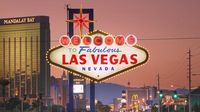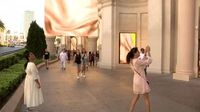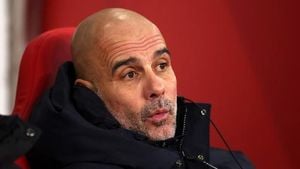Las Vegas, the city that never sleeps, finds itself at a crossroads in 2025. For decades, the neon-lit Strip has symbolized American excess, resilience, and reinvention. But this summer, headlines from both sides of the Atlantic have painted a picture of a city in crisis—a narrative fueled by declining visitor numbers, the closure of iconic casinos, and a scramble among state regulators and industry leaders to adapt to a rapidly changing tourism landscape.
It all began with a flurry of media coverage that put Las Vegas under a harsh spotlight. On August 12, 2025, London’s Daily Mail ran a dramatic headline: "Casino in dying Las Vegas dumps human dealers," highlighting the challenges facing local casinos. Just days later, on August 24, the same paper doubled down with news that the Poker Palace, a classic North Las Vegas casino dating back to 1974, would close its doors for good on September 30. The culprit, according to the Daily Mail, was a devastating slump in tourism, triggered by high prices, increased tariffs, and inflation rates that have deterred would-be visitors from making the trip to Sin City.
This wasn’t just a British tabloid’s take. The story of Las Vegas’s woes had already been brewing for weeks, sparked by a viral social media post from a disgruntled visitor who balked at the city’s notorious resort fees. By the end of July, Nevada’s own data confirmed the trend: gross gaming revenue, hotel occupancy, and overall visitor numbers for June 2025 were all down. National outlets like Time, Fox News, Associated Press, Bloomberg News, and Reuters piled on, each offering their own analysis of what was going wrong—and what might come next.
The conversation quickly turned to blame. Are resort fees to blame for the slump? The Las Vegas Review-Journal asked just that on August 25, citing tourism advocates Desiree Stokes Blum and Leora Azoulay. Both argued that the fees, which can add hundreds of dollars to a hotel stay, are driving price-conscious travelers elsewhere. “Their pleas are falling on deaf ears,” the Review-Journal noted, as local resorts continue to charge the controversial surcharges. Yet, as the article pointed out, resort fees aren’t unique to Las Vegas—major destinations across the U.S. have similar charges, and room rates in cities like New York, Los Angeles, and Miami are hardly bargains.
Other theories have circulated. Some point to tariffs, particularly those introduced during the Trump administration, as a factor that could be raising the cost of dining and entertainment. Others cite the looming new tax on gambling winnings, set to take effect on January 1, 2026—though, as of June 2025, that policy hadn’t yet impacted the market. Still, the evidence doesn’t point to a single culprit. As Jeremy Aguero, an analyst with Applied Analysis, explained at a Las Vegas tourism town hall on August 27, “This is not close to the most difficult period we’ve had, but it’s certainly a new one, and that period is immediate, and I think everybody wants to find the cause, right? The single thing that’s causing it to happen. And I don’t think there’s even such a thing out there. I think there’s a multitude of factors.”
Aguero and other experts at the town hall, including Alan Feldman—a veteran of MGM Resorts and now with UNLV’s International Gaming Institute—pointed to broader economic trends. Record-high debt levels among Americans and persistently low consumer confidence since the pandemic have put a damper on discretionary spending. International and geopolitical conflicts are also influencing travel decisions, further complicating the picture for Las Vegas.
Yet, if history is any guide, Las Vegas has a knack for bouncing back. Feldman offered some perspective: “We’ve heard this before. Somewhere here around me, I can’t access it right now, I have a Life magazine from like 1947 that has—on the cover—is Vegas dead? Is Vegas done? One of the things that Jeremy has noted very specifically, we’ve had these dips and downturns periodically, but if you take a look at the last 80 or 90 years, anyone who has bet against Las Vegas has lost.”
Still, the urgency to adapt is real. Visitor numbers have dropped every month in 2025 compared to the previous year, and the industry is feeling the pressure. Major operators like Wynn, MGM, and Resorts World have faced multimillion-dollar fines this year for anti-money laundering (AML) compliance issues, adding regulatory headaches to the mix.
In response, Nevada regulators are preparing to loosen restrictions on casino salons—private gaming rooms designed for high-value patrons. On August 28, the Nevada Gaming Control Board (NGCB) endorsed sweeping amendments to its two-decade-old salon rules, aiming to boost tourism and keep the state competitive. The proposed changes, which await a final vote from the Nevada Gaming Commission in late September, would lower the financial entry threshold for salons from $300,000 to just $20,000, and allow casinos more flexibility to set their own minimums. For the first time, poker would be introduced as a salon game option, requiring a $20,000 table minimum and at least $10,000 from each player—with financial checks for all participants.
NGCB Chair Mike Dreitzer summed up the motivation: “The goals remain the same. Bringing more revenue to the state of Nevada in uncertain times and allowing for flexible and unique amenities that certain non-restricted licensees offer their valued patrons. All of this is in the face of growing competition across the U.S. and the world.”
Industry leaders are enthusiastic. Virginia Valentine, president and CEO of the Nevada Resort Association, called the lowered minimums “the most significant impact in the legislation,” arguing that Nevada had put itself at a disadvantage with such high entry costs. “By lowering the minimum front-money requirements while offering the same privacy, security, and elevated gaming experience, we believe we’ll attract casino patrons who aren’t playing here now,” she told CDC Gaming.
Others see the move as overdue. Joe Lupo, president of Hard Rock Las Vegas, noted, “Things have changed in this country. Online gaming has taken money out of the pockets of consumers coming here to Las Vegas. We need to be more progressive. While it’s been said the salons are successful, I tell you to walk through casinos and you’ll see empty salon after empty salon. I don’t think they’re successful. They will be successful if we can utilize them more.”
Of course, not everyone is convinced. Enforcement chief Kristi Torgerson cautioned that lowering thresholds too far could stretch regulatory resources thin. “If the amount were zero, it would increase the number and use of salons and require the Board to dedicate more staff to covering them,” she warned. Ultimately, the Board settled on the $20,000 standard, with the possibility of exceptions—a compromise Dreitzer described as a way to “balance out everyone’s concerns.”
Meanwhile, the city waits for the latest visitor numbers, due to be released this Friday, which will reveal whether Las Vegas is on the mend or if the slump continues. Despite the anxiety, there’s an undercurrent of optimism—rooted in the city’s long history of comebacks and reinvention. As columnist Johnny Kats and local influencer Heather Collins reflected during the town hall, the entertainment capital of the world remains a place that thrives on change, creativity, and a little bit of risk-taking. For now, all eyes are on the Strip, watching to see what Las Vegas will do next.





